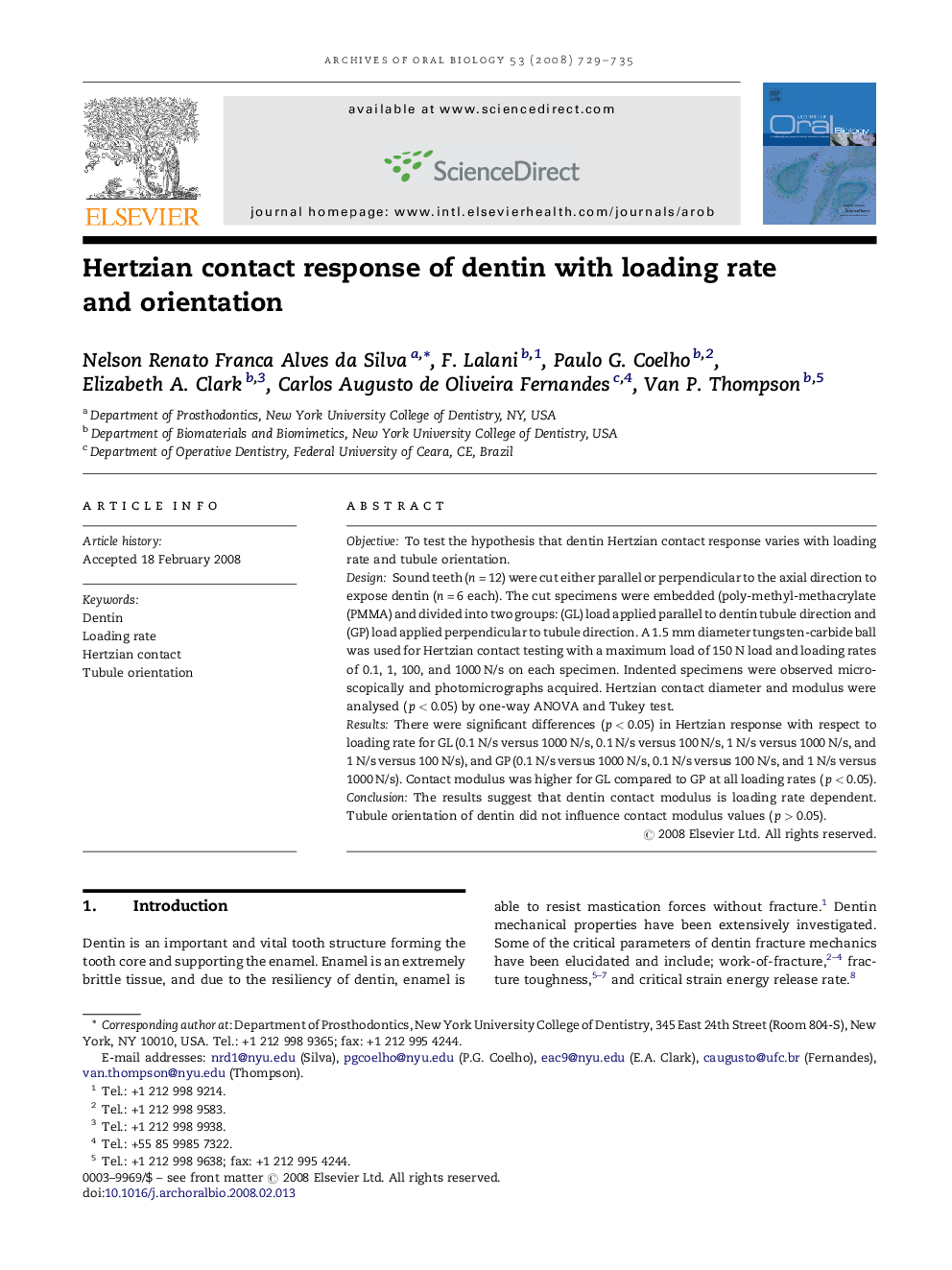| Article ID | Journal | Published Year | Pages | File Type |
|---|---|---|---|---|
| 3121139 | Archives of Oral Biology | 2008 | 7 Pages |
ObjectiveTo test the hypothesis that dentin Hertzian contact response varies with loading rate and tubule orientation.DesignSound teeth (n = 12) were cut either parallel or perpendicular to the axial direction to expose dentin (n = 6 each). The cut specimens were embedded (poly-methyl-methacrylate (PMMA) and divided into two groups: (GL) load applied parallel to dentin tubule direction and (GP) load applied perpendicular to tubule direction. A 1.5 mm diameter tungsten-carbide ball was used for Hertzian contact testing with a maximum load of 150 N load and loading rates of 0.1, 1, 100, and 1000 N/s on each specimen. Indented specimens were observed microscopically and photomicrographs acquired. Hertzian contact diameter and modulus were analysed (p < 0.05) by one-way ANOVA and Tukey test.ResultsThere were significant differences (p < 0.05) in Hertzian response with respect to loading rate for GL (0.1 N/s versus 1000 N/s, 0.1 N/s versus 100 N/s, 1 N/s versus 1000 N/s, and 1 N/s versus 100 N/s), and GP (0.1 N/s versus 1000 N/s, 0.1 N/s versus 100 N/s, and 1 N/s versus 1000 N/s). Contact modulus was higher for GL compared to GP at all loading rates (p < 0.05).ConclusionThe results suggest that dentin contact modulus is loading rate dependent. Tubule orientation of dentin did not influence contact modulus values (p > 0.05).
